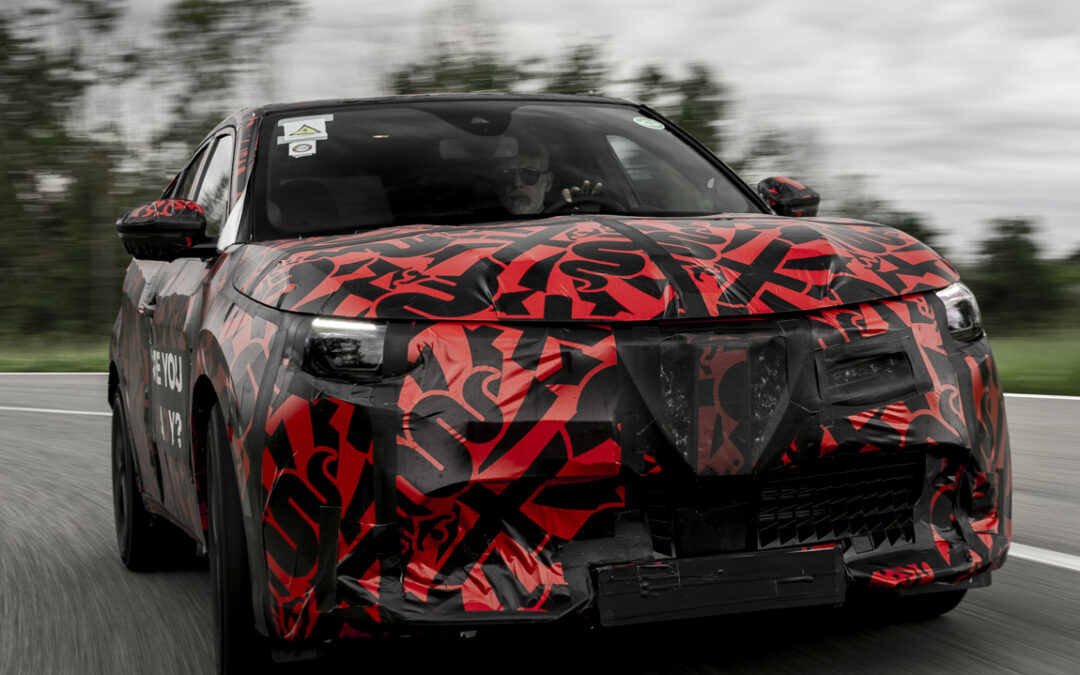
ALFA ROMEO JUNIOR ELETTRICA
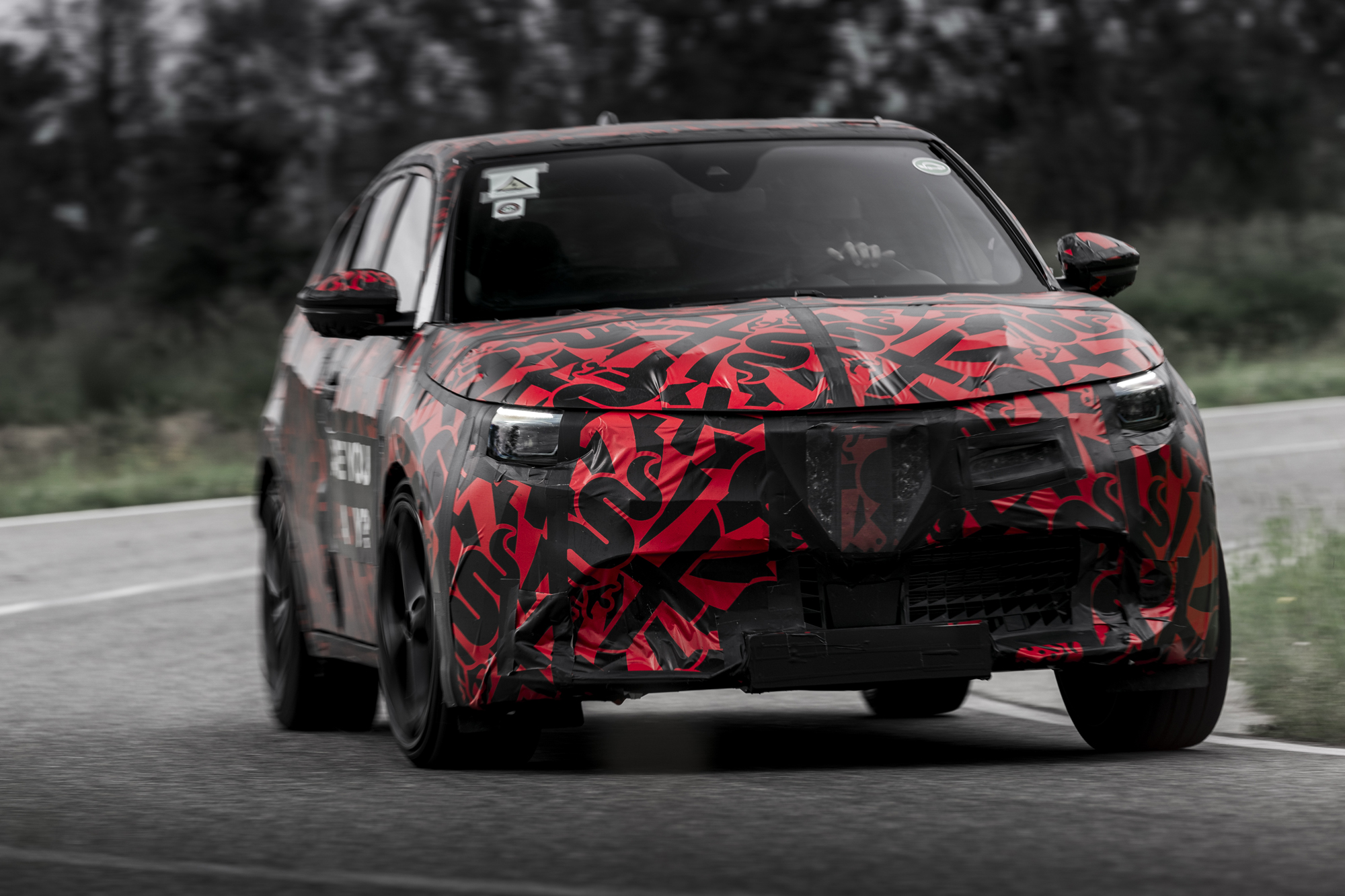
THE YEAR’S MOST CONTROVERSIAL CAR: DRIVEN
A frenzied political row turned the Alfa Milano into the Alfa Junior. But is the car itself actually worth all the fuss?
The Junior Elettrica is Alfa Romeo’s first all-electric car, a compact family hatchback whose size is inversely proportional to the expectations of the Alfisti – Alfa Romeo’s global fan base.
CAR is first to drive a disguised prototype of the high-performance Veloce version. Here’s everything you need to know.
1 Alfa’s engineers have focused on fun first and outright speed a distant second
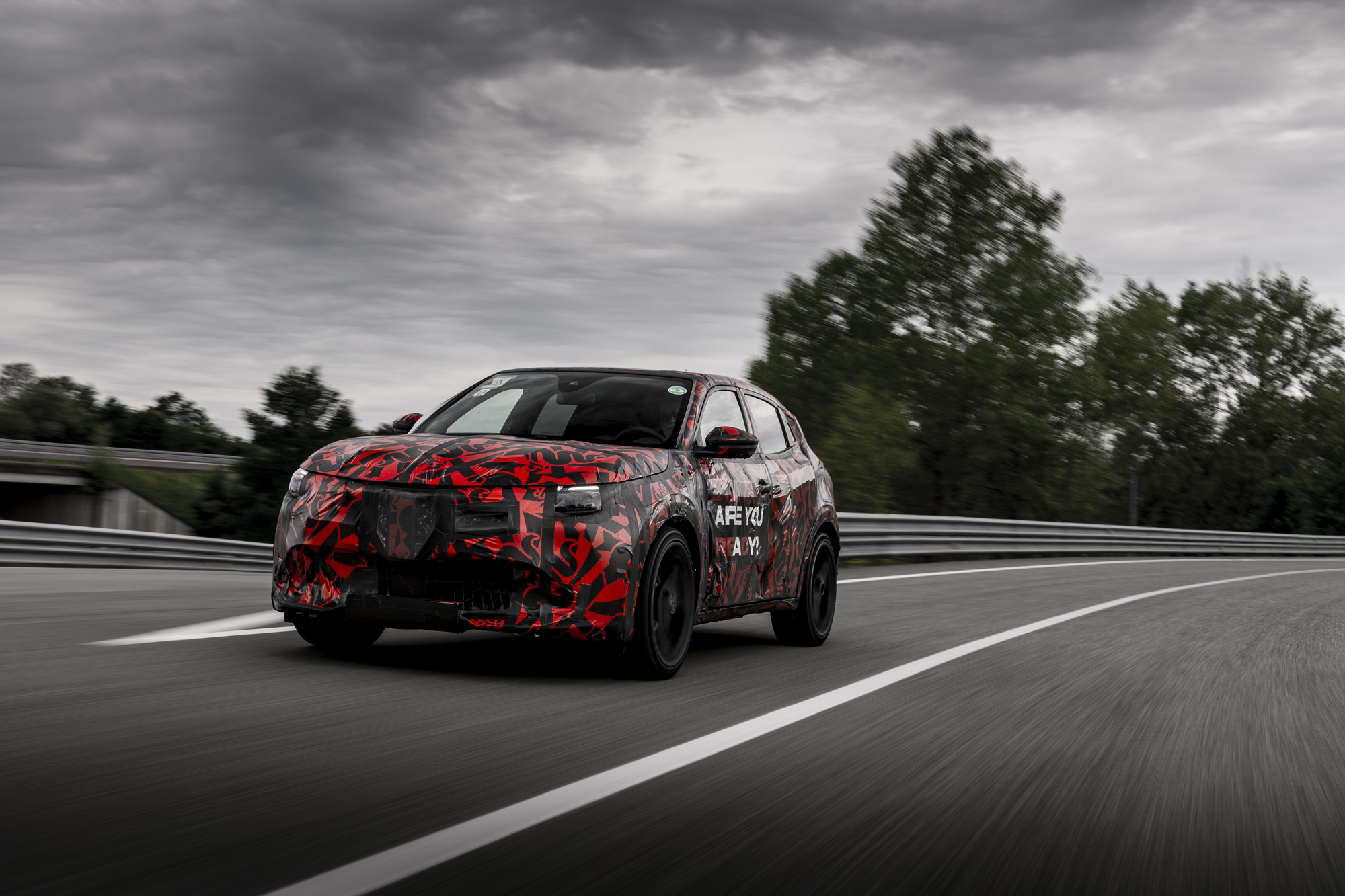
‘Driving the Junior Veloce should be about having fun above everything else,’ says Mario Lamagna, the Junior’s product manager. ‘Being fast in a straight line is easy. I think it’s better to arrive in your own time with a grin on your face than to arrive first.’ Lamagna and his team have spent the last five years trying to achieve this goal. We’re at Balocco, the Stellantis group’s vast proving grounds an hour west of central Milan, to discover if all those late nights and weekends away from the family have delivered what Alfa Romeo really needs – a successful return to the small family car market, spearheaded by its first electric vehicle.
As part of Stellantis, Alfa Romeo is using the same e-CMP2 modular architecture that already underpins other models in the Stellantis stable like the Fiat 600, Peugeot 2008, Vauxhall Mokka and Jeep Avenger. That means working within a number of fixed parameters, and sticking with front-wheel drive, but this hasn’t stopped the engineering team working every angle to ensure the top-dog Junior Veloce could not be anything except an Alfa Romeo.
It’s powered by a single motor that’s good for 237bhp and 255lb ft of torque, and it drives the front wheels through a torque-sensing differential – a first among the electric vehicles in the Stellantis family. No official figures have been provided, but a 6.5-second sprint to 60mph is in the right ballpark.
The Veloce’s MacPherson strut front and torsion beam rear suspension set-up is fitted with bespoke springs, dampers and anti-roll bars, and is 25mm lower than on less powerful versions of the Junior. Big 20-inch ‘telephone dial’ alloy wheels wrapped in Michelin Pilot Sport 225/40 R20 tyres are standard, as are vast 380mm solid front disc brakes gripped by 38mm four-piston monobloc calipers. A 2557mm wheelbase – 53mm shorter than the Peugeot E-2008 – with stumpy overhangs bodes well for both greater cornering agility and enhanced straight-line stability, as does a relatively low (for an EV) 1560kg kerbweight. The very quick steering – shared across the Junior range – has a 14.6:1 ratio for just 2.6 turns between locks.
2 It drives like an Alfa Romeo
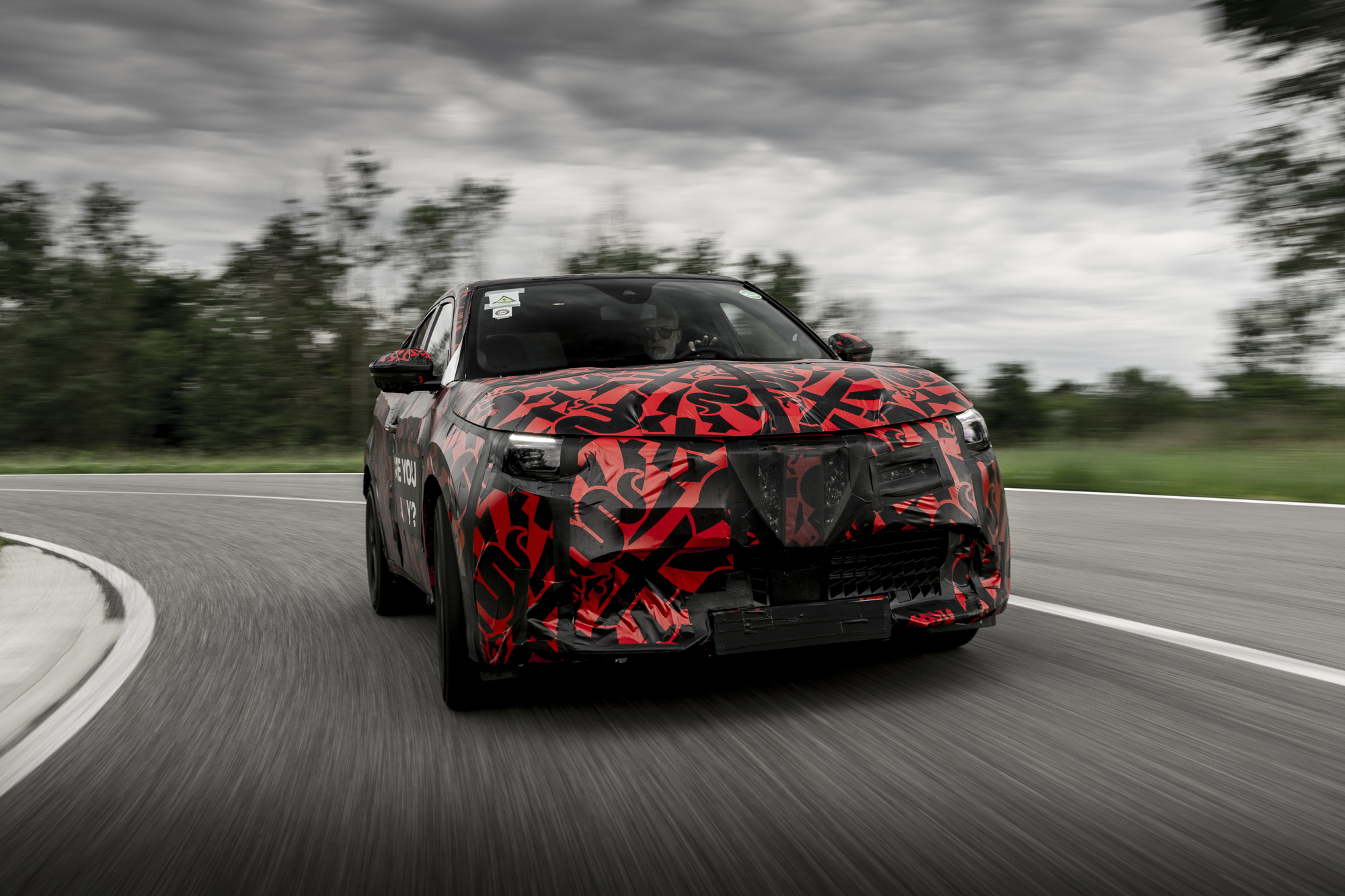
‘Dynamically, this prototype is 99 per cent ready,’ says Domenico Bagnasco, head of the Junior’s engineering and dynamics team. ‘What you’re driving today is what Junior owners will be driving later this year.’ The man who engineered the Alfa Romeo 8C, Giulia GTA, 147 GTA and 33 Stradale puts on his seatbelt, points at the entry gate to the Langhe Circuit and simply says ‘Go!’ While most circuits are typically very flat and smooth, flattering the way a car rides and handles, Balocco’s Langhe Circuit is anything but typical. With 76 corners over its 7.6-mile length, the serpentine track contains every conceivable surface, from billiard-table-smooth flat tarmac to undulating, scarred and acned blacktop that does a very good impression of British A and B roads. There are nasty mid-corner transverse ridges, vicious off-camber curves that tighten like a spiral, and just to keep things lively, a smattering of corners lifted from some of Europe’s most demanding circuits, like the Bus Stop Chicane from Spa-Francorchamps, both the Prima di Lesmo and Curva Grande from Monza and the left-hand Hugenholtzbocht from Zandvoort. Challenging.
It only takes a few hundred yards of track and the first sweeping hairpin to realise that the Junior feels a little bit special. Over the wide mix of surfaces I cover, the Veloce’s damping feels spot on, for a ride quality that’s firm but never brittle or jagged. You hear the majority of intrusions rather than feel them – always a good sign.
Body control is equally impressive. Lap after lap the Junior feels taut and tied down, with understeer notable by its absence. It changes direction as a single unit, encouraging you to scythe faster and faster into corners, confident that stubby nose with respond quickly and faithfully to the smallest change in steering angle. You can feel the steering wheel wriggle and writhe when you punch hard out of corners and get that differential earning its keep, pulling the Junior’s nose closer to the apex.
‘The Junior is a striking piece of design with a chunky four-square assertiveness’
Alfa Romeo’s familiar switchable DNA drive mode – Dynamic, Natural and Advanced Efficiency – which recalibrates steering assistance, throttle response and power and torque delivery, has been amped up to good effect. Advanced Efficiency does everything possible to maximise range. I try it for a few minutes before thinking life is too short for going that slow. Neutral is just that – perfect for around town, school runs and routine trips. But it’s Dynamic mode I reach for, unleashing the full 237bhp and 255lb ft, reducing steering assistance but enhancing self-centring, and turning throttle response Scalextric sharp.
The powerful brakes deserve particular praise. Beautifully progressive, with no discernible transition from regen to mechanical retardation, they feel and respond like a set of perfectly calibrated mechanical stoppers that are happy to repeatedly haul the Junior down from three-figure speeds with ease. I haven’t driven an electric car with better brake feel and response.
The Junior does the bullet-fast-in-a-straight-line thing like most torque-rich electric cars do, but the good news is that come the corners it feels alert and spry. Its 1560kg kerbweight, wrist-flick responsive steering, low centre of gravity and differential-enhanced cornering capabilities mean threading the Junior through a series of challenging bends is as rewarding as it is unexpected. And yet when you want to just mooch along on the way to the shops or on the school run, the Junior is quiet, refined and biddable.
3 Forget about the name change from Milano to Junior – just look at it
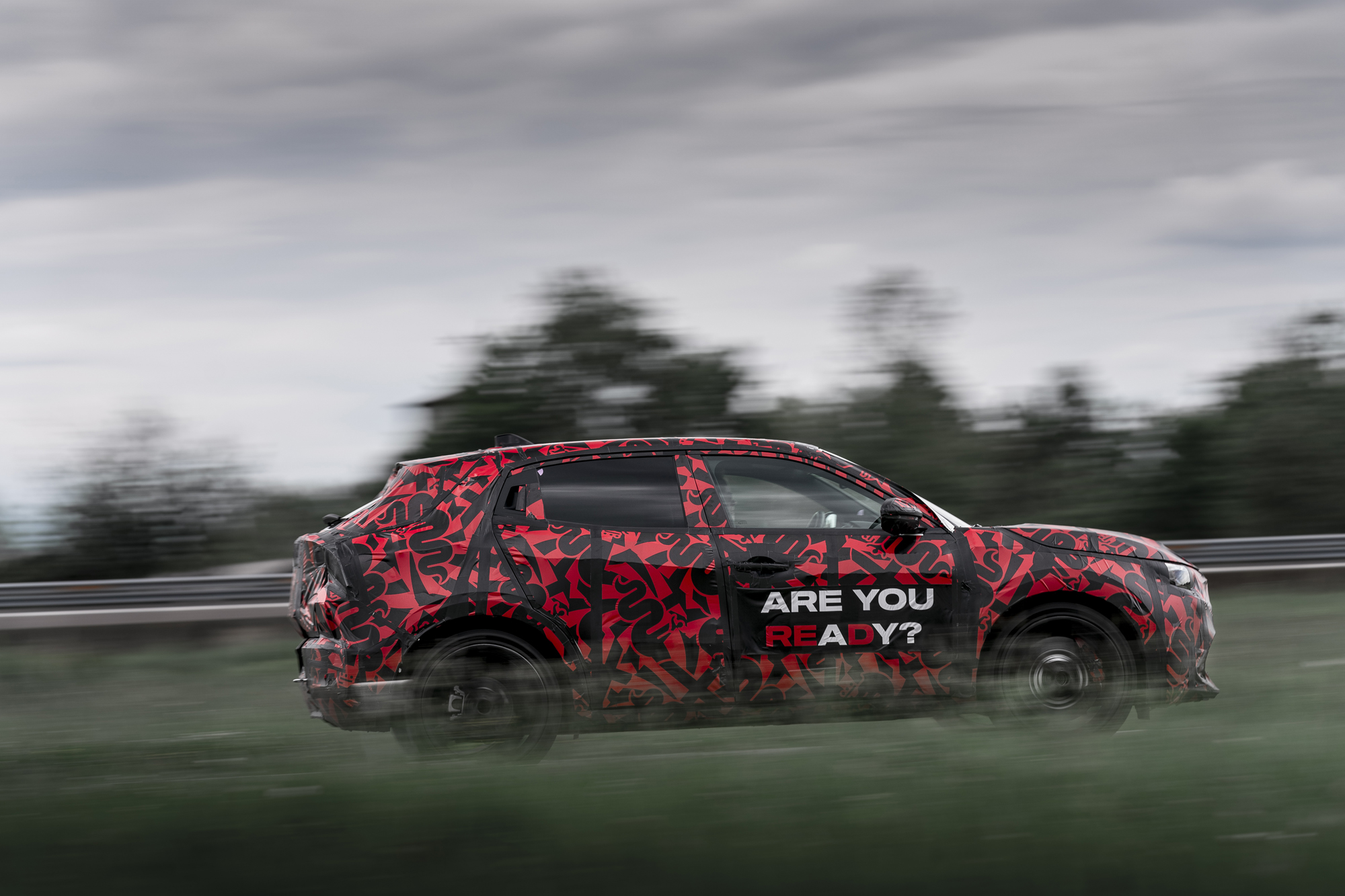
If you missed the mayhem surrounding this car’s name change from Milano to Junior, here’s a quick explanation. Alfa Romeo originally unveiled the car badged as the Milano in reverential reference to the car maker’s city of origin. Within days the Italian government declared that any car built outside Italy couldn’t be named after an Italian city. Interesting news for Kia and its Sorento, I guess. Rather than engage in politics, Alfa Romeo switched to Junior, another storied name in its 114-year history. If you listen to industry insiders, they’ll tell you Giorgia Meloni’s government’s denouncement of the Milano name has nothing to do with national pride and everything to do with the government not having a seat on the Stellantis board. Unlike the French government, which has…
No matter, whatever badge it’s wearing the Junior is a striking piece of design with a chunky four-square assertiveness that doesn’t quite come across in pictures. At the front, it’s the new interpretation of the Alfa Romeo scudetto – grille and logo shield – that dominates. Matt black and inset with the familiar cross (the historical symbol of Milan) and biscione serpent (from the Visconti family coat of arms) the debut of this new emblem underlines Alfa Romeo’s entry into a new era.
Fat black plastic cladding makes the large wheelarches appear even bigger and the 20-inch alloys look almost demure. The coda tronca (short tail in Italian) from the 1963 Alfa Romeo Giulia TZ was the inspiration for the Junior’s rear end, complete with Alfa Romeo writ in large black script. Peer underneath the Junior and you can see the flat undertray that covers everything from nose to tail. Walk around the car once more and you’ll spot the hidden rear door handles, the contoured roof and the biscione in the C-pillar.
4 The cabin successfully balances style, technology and practicality
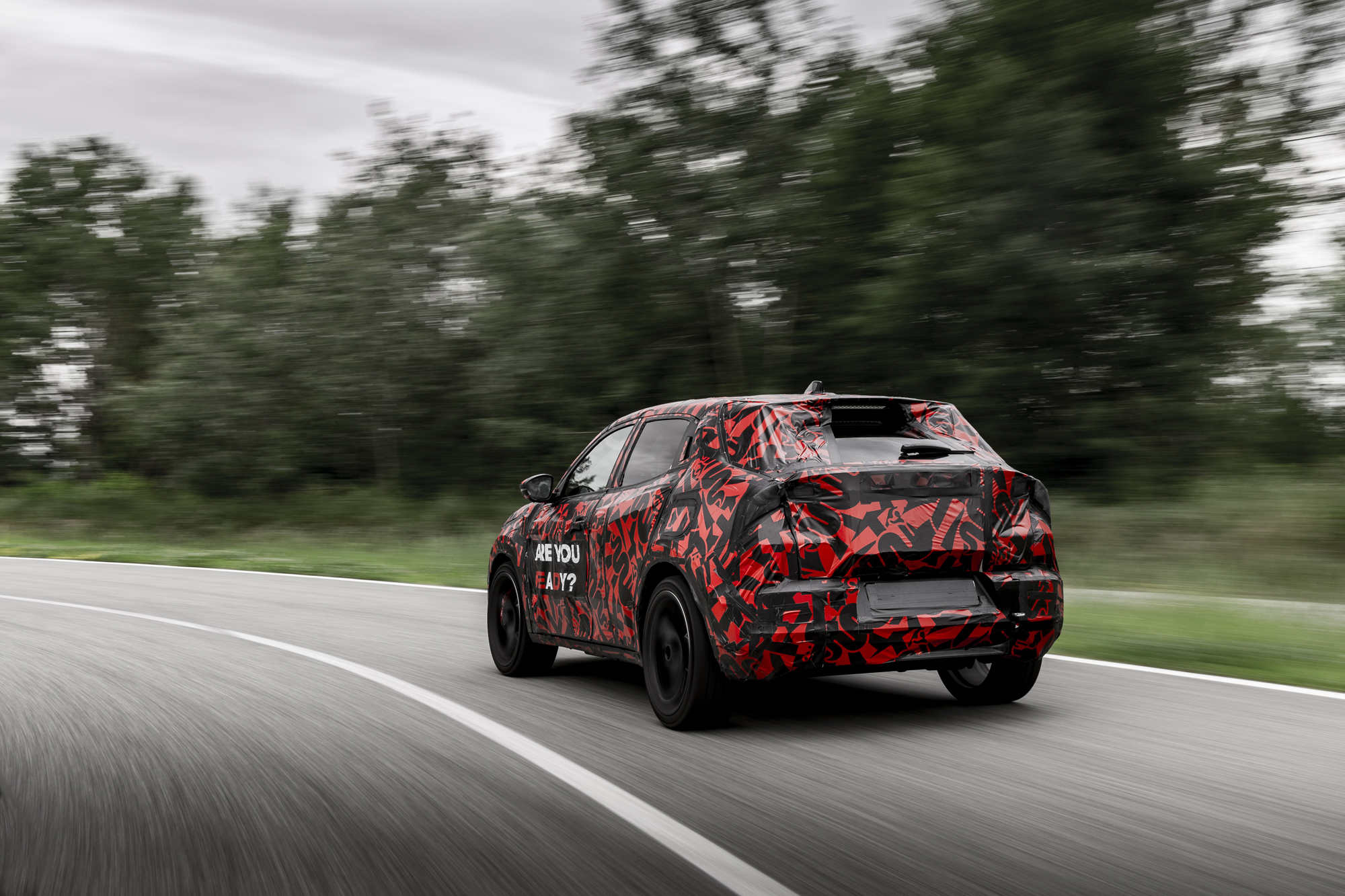
There’s more good stuff to be found on board. The small-diameter steering wheel, low-mounted grippy seats and centrally located pedals make for a decent driving position. The architecture is an adroit combination of legacy details (cool Quadrifoglio-inspired circular air vents and twin-cowled instrument binnacle) and modern Stellantis hardware (twin screens and drive selector). All the plastics you touch are pliant and tactile, those you won’t are not. And, joy of joys, there’s a full row of physical buttons for the climate control.
It’s snug in the back – tall adults wouldn’t want to be consigned to the rear bench for a long journey. Lift the hatch and there’s a decent 400-litre split-level boot, complemented by a compartment in the frunk for housing the charging cables.
The infotainment software is slick, the app-styled layout feels pretty intuitive to operate, and then there’s the ‘Hey Alfa’, virtual assistant powered by ChatGPT.
Plug your destination in to the sat-nav, and it takes into account real-time traffic conditions, driving style and battery state of charge to ensure required charging points are easy to locate. Alfa Connected services include over-the-air software updates and E-Control for remote charging and preconditioning.
5 It captures the spirit of the 147 GTA
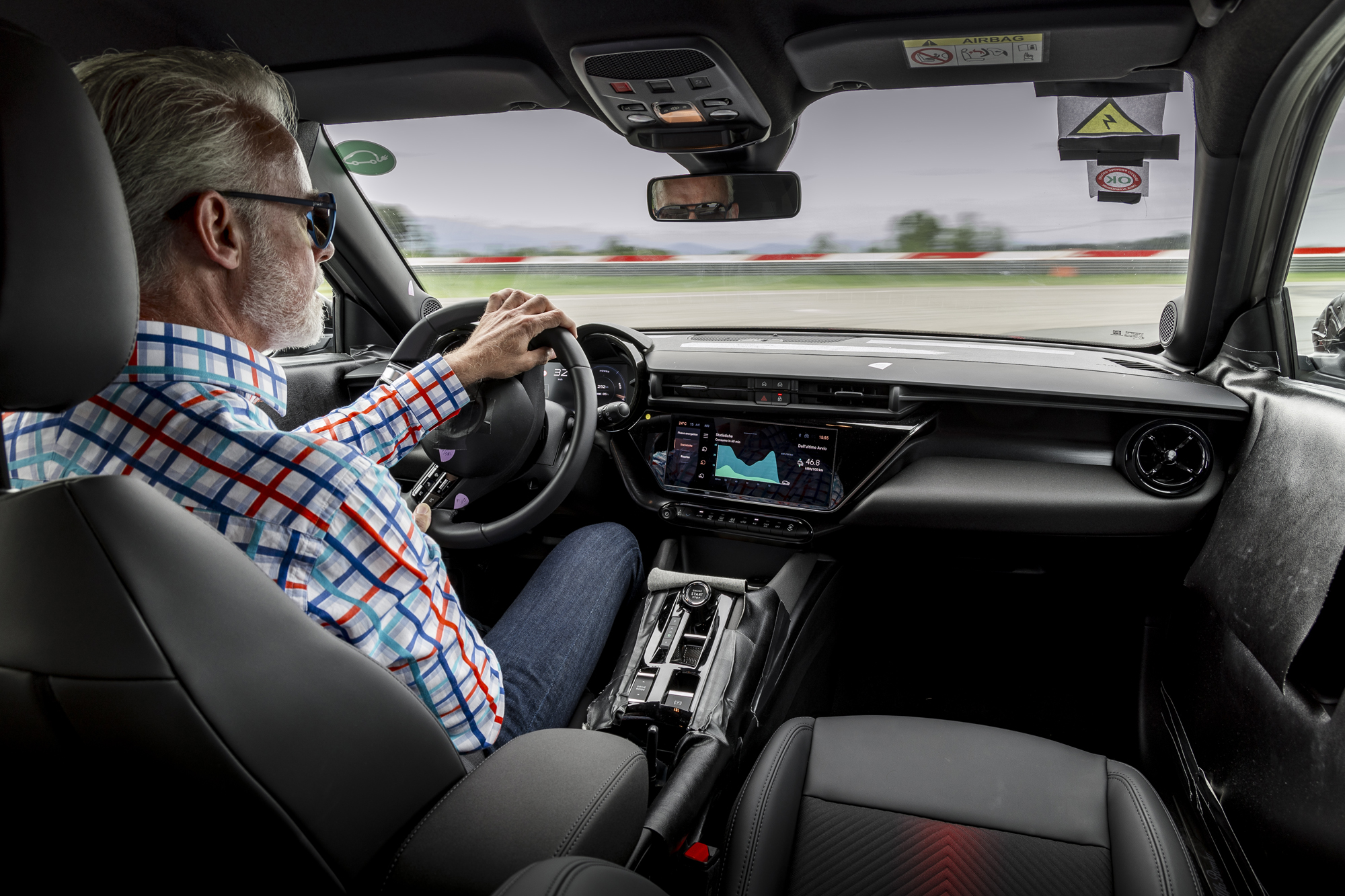
Cast your memory back to 2002 and there’s more than a whiff of the 147 GTA here. The hot 147 GTA was powered by a 3.2-litre V6 engine that developed 246bhp at 6200rpm and 221lb ft at 4800rpm. To keep that torque in check, the front-wheel-drive 147 GTA was fitted with a Torsen differential – a first for Alfa Romeo – as well as an upgraded six-speed manual transmission, lowered and stiffened suspension, and larger brakes. It could rocket its way to 60mph in a fraction over six seconds, and looked the part.
Sounds familiar.
Both GTA and Junior are compact, pacey and charismatic hatchbacks with plenty of performance and even more character. Both were signed off by Domenico Bagna
6 It’s priced to sell (and it’s not only electric)
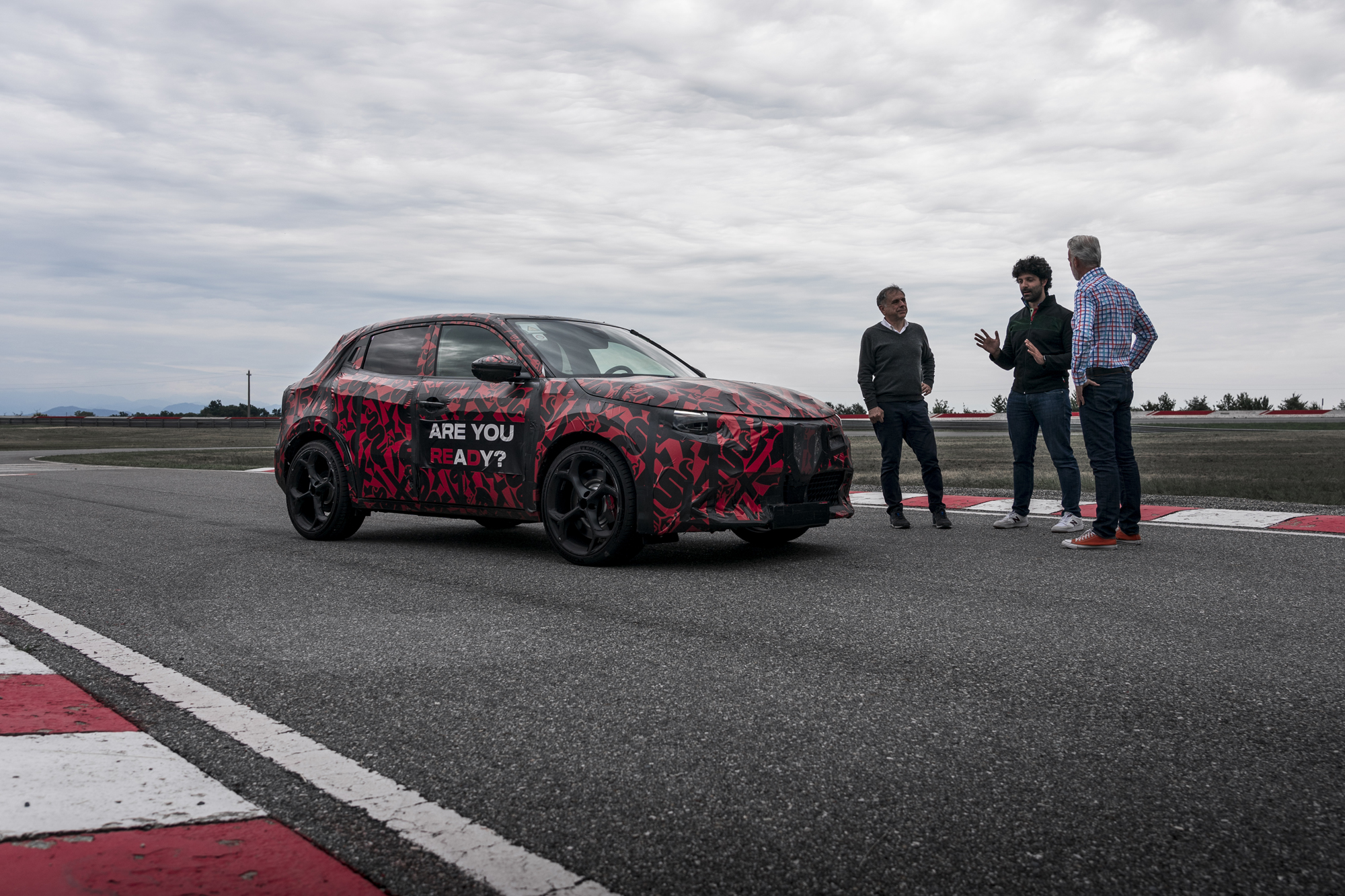
When it goes on sale later this year, the Junior will be available with the choice of two electric-motor Elettrica versions or a 48-volt petrol hybrid Ibrida model. The EVs use the same 54kWh battery, with motor outputs of 154bhp and 237bhp. Expect to cover 250 miles between charging, with 10-80 per cent refills at up to 100kW taking just under half an hour.
In the UK the Junior Elettrica 156 kicks off the line-up at £33,895, followed by the Elettrica Speciale 156 (same motor, more kit) at £35,695, and topped by Elettrica 240 Veloce at £42,295.
The Ibrida runs the conventional 48-volt hybrid and 1.2-litre 134bhp three-cylinder petrol engine that will already be familiar to Peugeot, Vauxhall and Jeep drivers. No word yet on Ibrida pricing, but expect it somewhere around the £27,000 mark.
7 This is the just start for Alfa Romeo’s new era
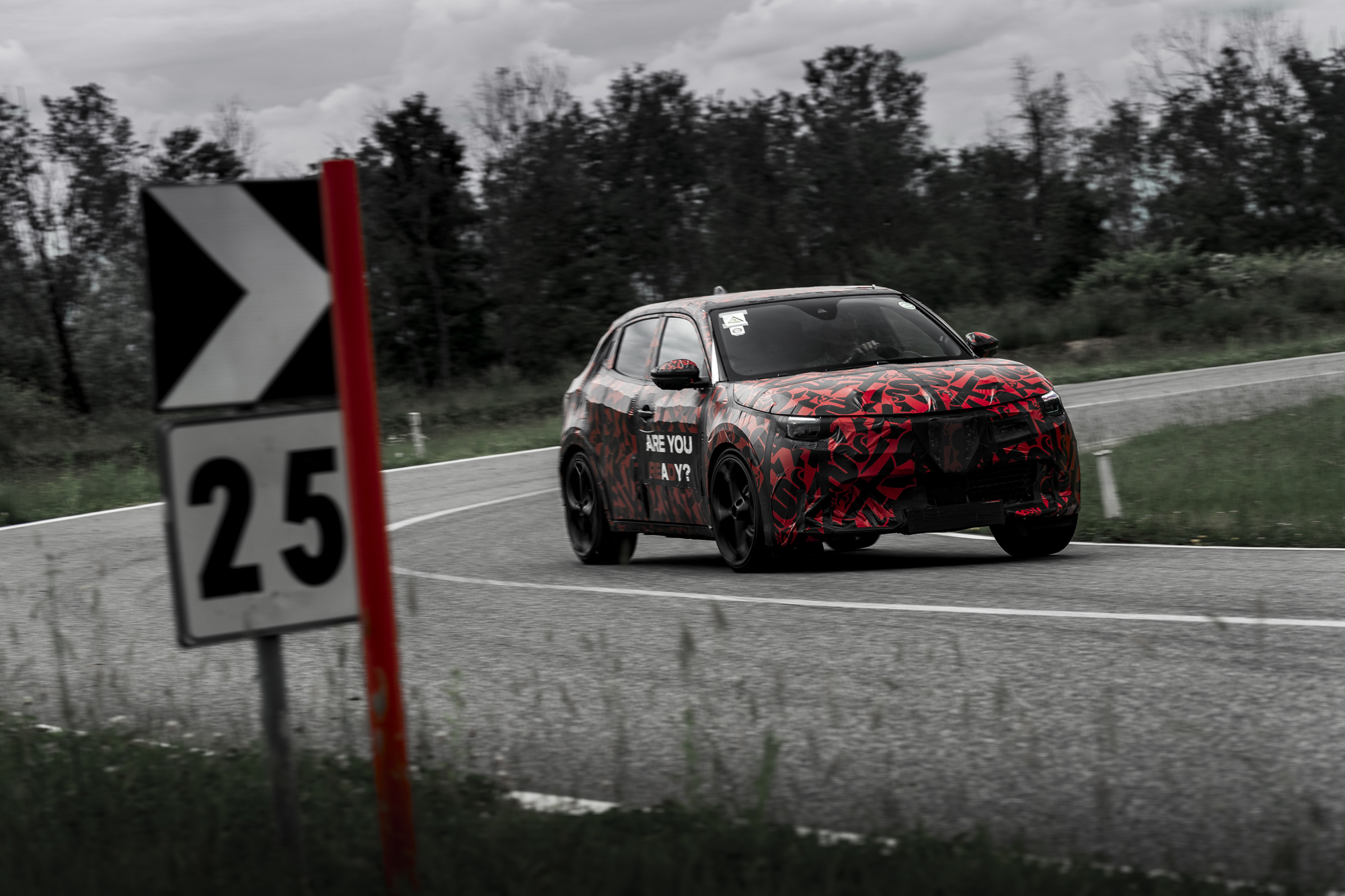
Two years ago CEO Jean-Philippe Imparato announced Alfa Romeo’s ‘zero-to-zero’ mission – a ballsy strategy to go from zero EVs to a full line-up of zero-emissions cars by 2027. Heady stuff, and not the first time the Italian marque has announced some seriously challenging goals, which in some cases it’s struggled to meet. But under the stewardship of Stellantis and the inexorable push towards electrification, this could well be the plan that ensures perennial underdog Alfa Romeo shines with the incandescence we all secretly believe it deserves.
Engaging, coherent and – crucially – driver-focused, the Junior feels like it was designed and engineered by someone who was always sitting in the driver’s seat and not in front of a spread sheet. It feels convincing as a car engineered to put a glint in your eye when the right road comes along. But way more importantly it feels like an Alfa Romeo. The Afisti can rest easy… for now.

